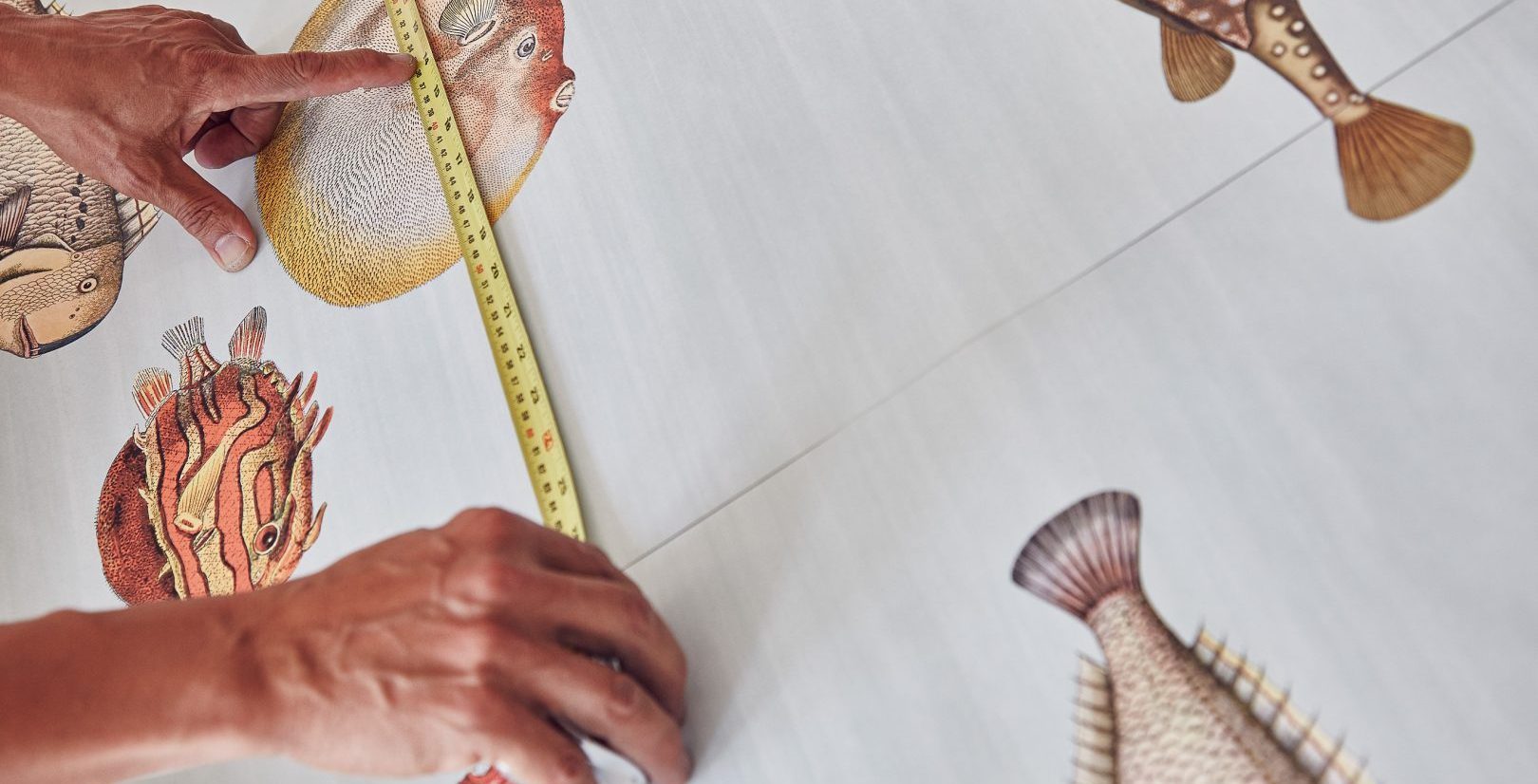wallpaper paste masterclass
Some wallpaper manufacturers will provide a paste recommendation with their hanging instructions, and Philip Jeffries are an excellent example of this. For every single paper, they show how it should look and they give you the hanging instructions online with a paste recommendation. However, as this isn’t always the case it’s vital that you know which paste does what. Here are the big 5 wallpaper pastes to get familiar with…
- Starch-based (Green Top in the UK)
Ideal for traditional papers and English pulps, this paste is ready mixed and wheat-based. It is brilliant for hand-painted and fine textiles. You need to use this fairly quickly once you’ve opened it, as it is very prone to drying out. We don’t stock a lot of it as a result, as it has a shelf life.
- Light weight clear adhesive (Yellow Top in UK)
We tend to work with this paste when the wallcovering has a rice paper backing, like de Gournay and Fromental, which tend to be very thin and you run the risk of the paste pulling the paper away from the silk. You wouldn’t use this on a wooden pulp because it can stain the face of the wallpaper. We love it for its consistency (it is smooth and easy to spread) and versatility, as you can also water it down for hanging lining paper too. Never use it if you are working with a heavy vinyl, as it would literally fall off the wall. Albany, which we buy from Brewers, does a great one.
- Medium grade adhesive (Red Top in UK)
This is the most common paste we use, and we use it on a daily basis for non-woven backings. We literally use it for 70% of our work and we’re talking approx 50 tubs a month. It is a relatively heavy paste, due to the PVA content, so we tend to add moisture to it to help reduce the weightiness. This is an excellent paste for wallcoverings from Philip Jeffries, Arte and even De Gournay and Fromental. We find it to have excellent open time, great tack and not aggressive.
- Heavy grade Adhesive (Blue Top in the Uk)
When we are hanging a fabric backed or vinyl wallcovering, we turn to this. Super high-strength and heavy-duty, it requires the most work and you would never paste the back of the paper as a result. Instead, you paste the wall. The water-based adhesive is moisture-resistant, has a low water content and is breathable and we love that it can be rolled straight onto the wall.
- VOV (vinyl over vinyl) Paste
This is a specialty acrylic-based paste that we use on vinyl, metal and laminate. It’s great for tricky, non-porous areas, like on an external corner where the paper keeps springing up. Think of it like this, it literally grips to the surface for a tight finish, which is brilliant when the fabric doesn’t have much give or flexibility. We don’t use this all that often but it is there for when we do need it.
5 Things To Know…
- We can only hang if the room is of a certain temperature – ideally 18 degrees. If the room was too cold, for example, the paste won’t dry
- A common problem is applying too much paste. When you apply pressure to the wall it will squirt out. This can disclour/damage the wallcovering
- If you don’t apply enough paste, you will get dry spots which can create air pockets/bubbles which will show through
- Use a roller – this is the best tool for consistency
- You don’t always hang the lining paper and the wallcovering with the same paste, which is why it’s important your kit contains a variety of adhesives





